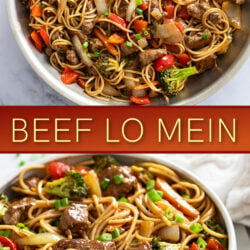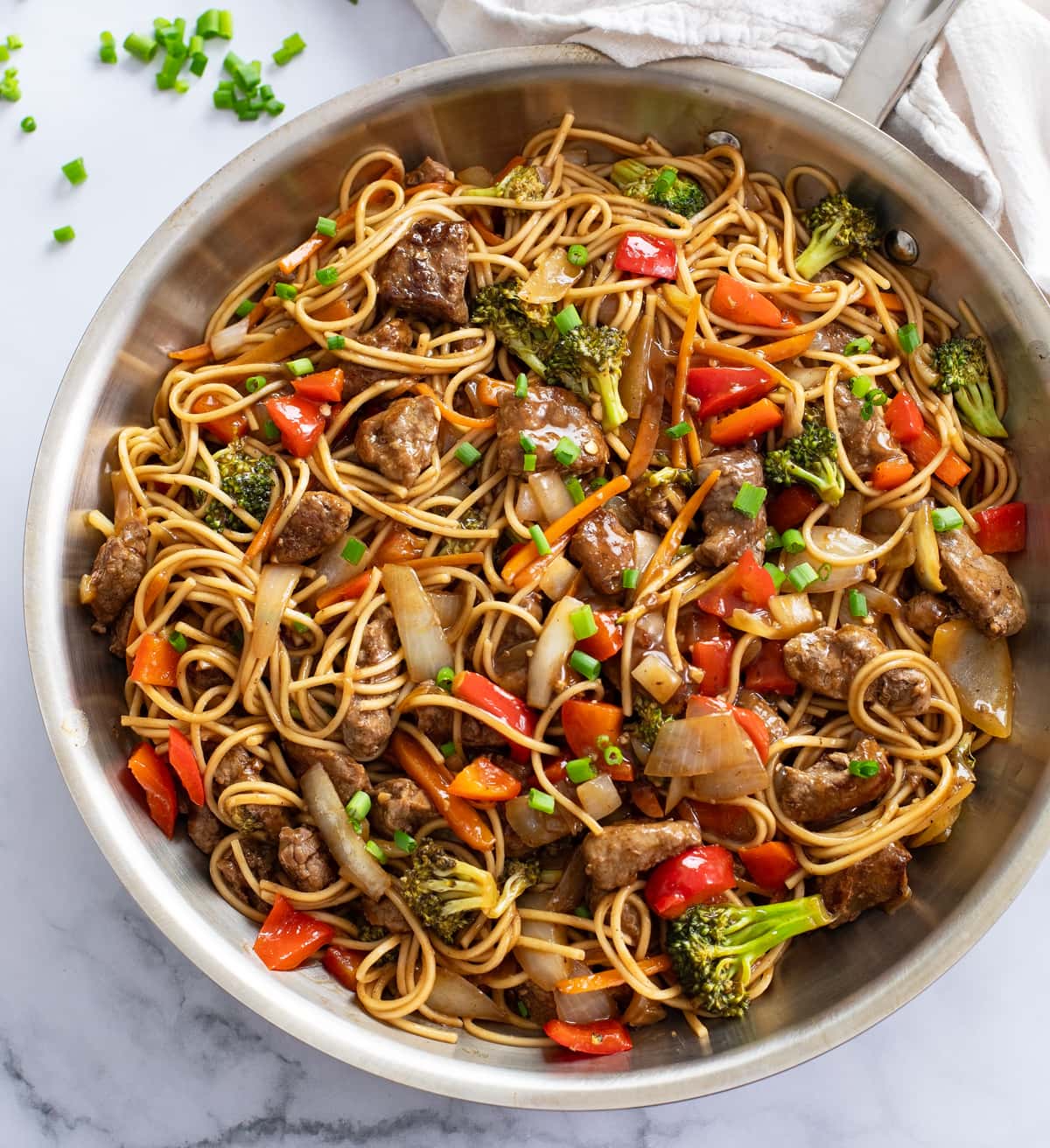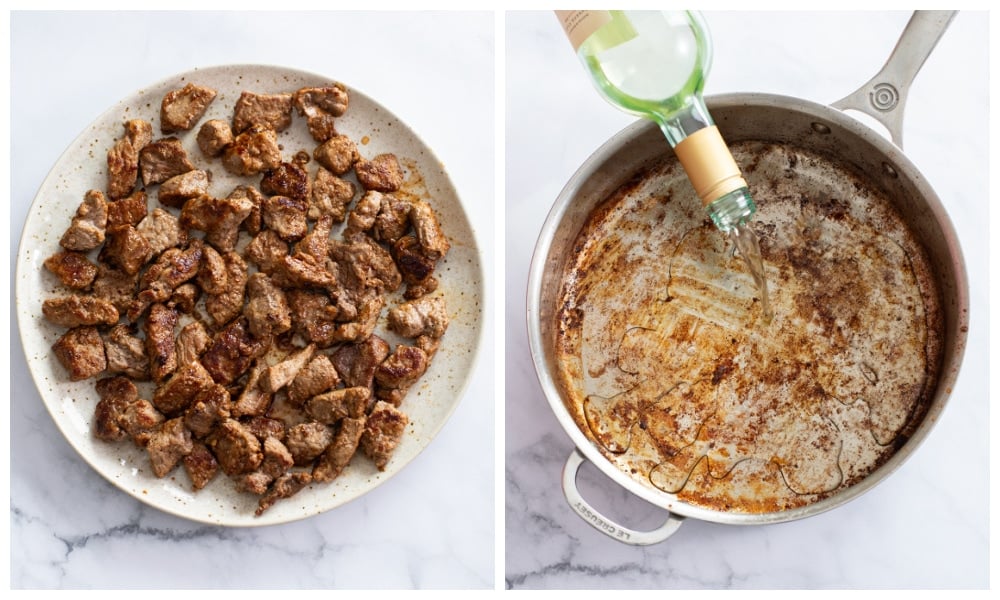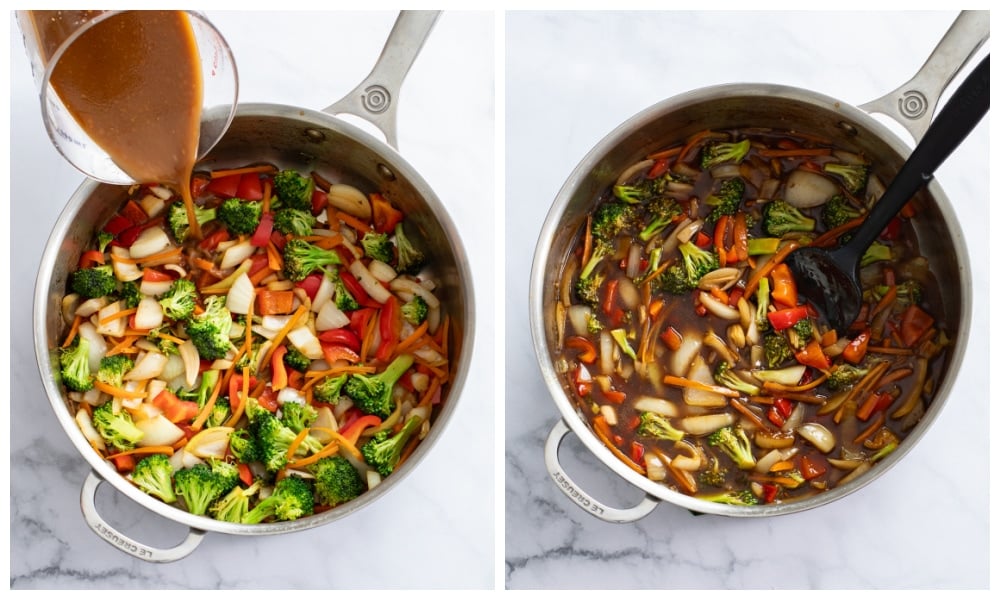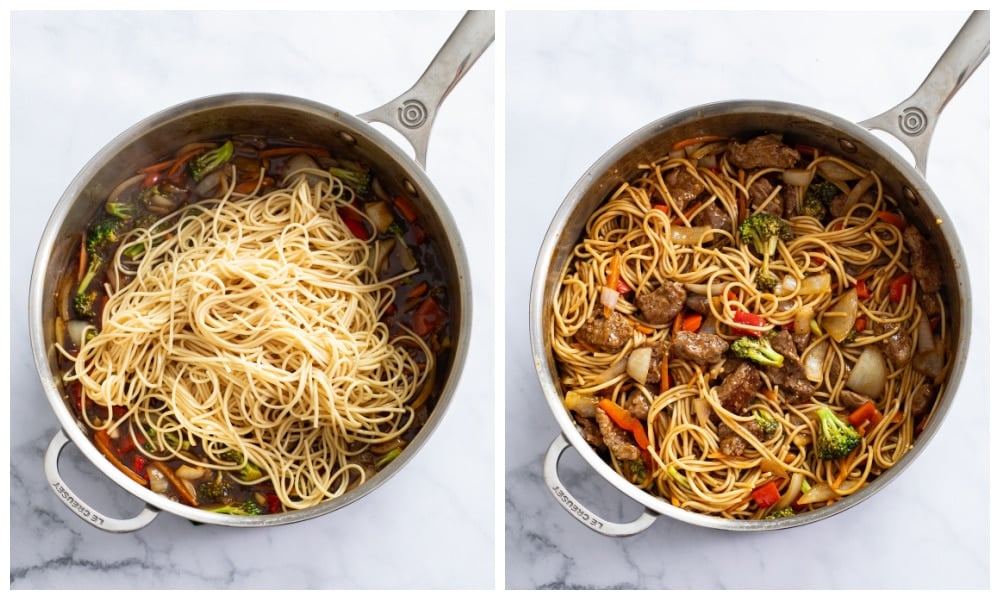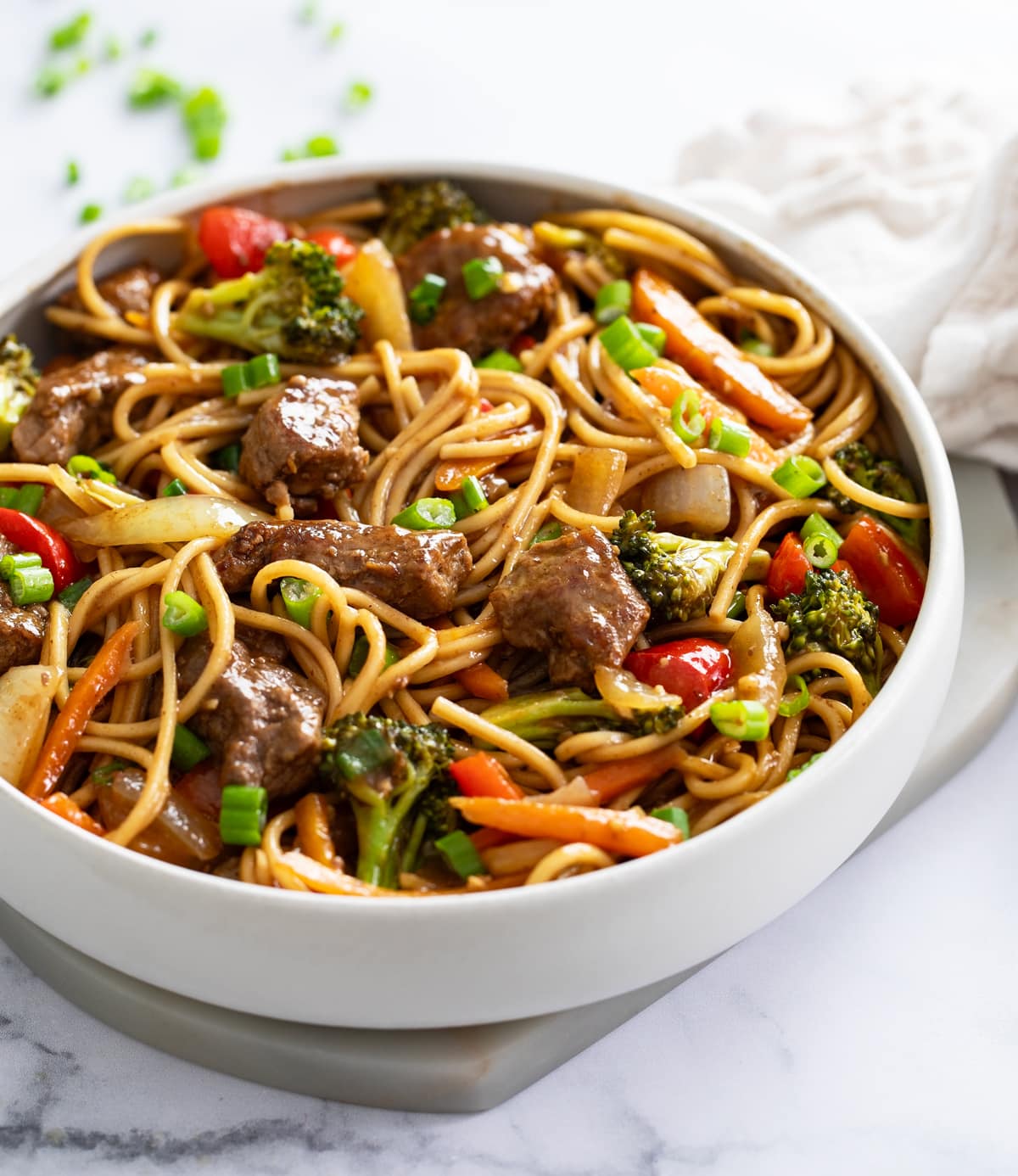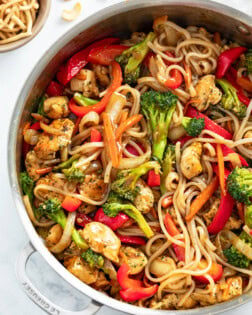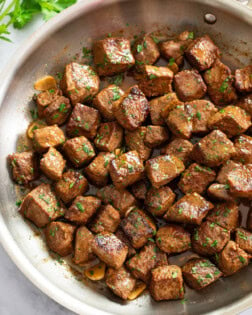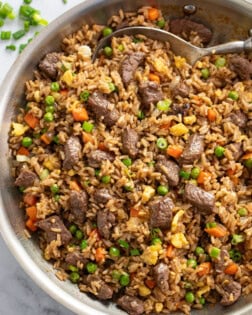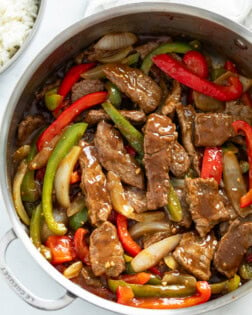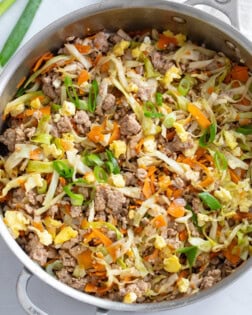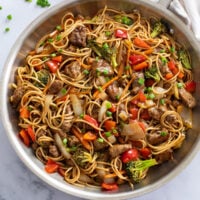The Best Beef Lo Mein Recipe
What makes this recipe so amazing is that it’s mind-blowingly good and just so darn easy to make! You can literally prepare this beef lo mein quicker than you can order takeout and have it delivered. It’s a fantastic noodle stir-fry recipe that uses a few of my best cooking tricks and favorite Asian ingredients. Adding cornstarch and baking soda to the beef marinade produces the most tender beef that cooks up perfectly alongside fresh crisp veggies. Then it’s all tossed together with yummy noodles in a restaurant worthy sauce that is perfectly balanced with just the right amount of sesame flavor to knock your socks off! This is the perfect recipe for anyone who loves quick meals and Chinese takeout! Just like my Chicken Lo Mein, Szechuan Chili Shrimp, and Moo Shu Pork it’s an amazingly yummy palate pleaser. Loved by all!
What Is Lo Mein?
If you’ve never heard of lo mein then you are missing out! It’s a well-known and loved takeout classic. Traditionally, the Cantonese-style preparation of this dish would basically be like a Chinese soup broth served with cooked noodles on the side for dipping. But my version is rooted in the American-style beef lo mein recipe, which is a saucy dish with lots of meat and veggies. Also, it’s very easy to confuse lo mein with Chow Mein, but the 2 noodle dishes have a few slight differences, the biggest being the choice of noodles used.
Sauce
Brown Sugar – Creates a syrupy base with deep color for the sauce that will really stick to the noodles. You can also use white corn syrup, but I am a big fan of using brown sugar. Soy Sauce (Low Sodium) – Regular soy sauce will work just as well as gluten-free tamari. Dark Soy Sauce – Thicker than regular soy sauce with a more intense flavor. If you can’t find any just use regular soy sauce with a pinch of sugar. Oyster Sauce – Yes, there is oyster in the sauce! It’s a great way to add some deep umami flavors. But be sure to avoid using it if you have any allergies to shellfish. Sub with hoisin sauce, teriyaki sauce or vegan mushroom sauce. White Pepper – Has a more subtle flavor than black pepper and is commonly used in Asian cooking. If you don’t have any white pepper on hand, black pepper can be used instead. Shaoxing Wine – A type of Chinese rice wine very similar in taste to dry sherry, which can be used as a substitution. Sesame Oil – One of my favorite cooking oils that packs a punch of flavor! And for an even richer taste, roasted sesame oil should be your top choice.
Beef
Flank Steak – This delicious cut of meat cooks up tender and is perfect for beef lo mein, but you can use any cut of steak you like such as sirloin, ribeye, etc. Cornstarch – Provides a coating that protects the beef from the high temperature of the wok helping to ensure that it cooks up tender. Soy Sauce (Low Sodium) – If you don’t have any low sodium soy sauce on hand, regular soy sauce or tamari will work just as well. Peanut Oil – I used peanut oil for added flavor. But you can use any type of neutral oil like vegetable, soybean, or canola. Baking Soda – Works as a meat tenderizer in the marinade.
Lo Mein
Veggies – Fresh mushrooms, napa cabbage, carrots, red bell pepper, snow peas, and bean sprouts. Other veggies can be used as well such as broccoli, snap peas, any kind of mushrooms, etc. Lo Mein Noodles – Fresh lo mein noodles are the best choice. They have a rich egg base and are deep yellow in color. However, you can use any style of ramen, Asian noodles or even spaghetti. Green Onion – Optional garnish and added flavor. Peanut Oil – Used for sautéing the dish.
Can I Use Any Type Of Noodles?
Yes, you can! However, for the best flavor, you want to use lo mein noodles if possible, which you can find at your local Asian market. The second best choice is any dried Asian egg-based noodle like chow mein noodles. You can also use any type of ramen noodle for this dish. And rice noodles will work too, but do keep in mind that any rice noodle will likely break. To help prevent rice noodles from breaking you want to make sure to soak them first according to the package directions before boiling.
Can I Make Gluten-Free Lo Mein?
Yes! It is possible to make this recipe gluten-free. First, replace the lo mein noodles with wheat-free noodles like rice noodles. Then substitute the soy sauce, dark soy sauce, and oyster sauce for gluten-free versions. Gluten-free soy sauce is also known as tamari.
Storing Leftovers
Leftovers of this yummy noodle dish will keep in the fridge for up to 4 days or in the freezer for up to 3 months when stored in an airtight container. When reheating from frozen, allow the beef lo mein to completely thaw out in the refrigerator overnight, prior to reheating.
Other Yummy Asian Takeout Recipes
Chicken Lo Mein Chicken Mushroom Stir Fry Mongolian Beef Chinese Lemon Chicken Kung Pao Chicken Yakisoba Moo Shu Pork Asian Lettuce Wraps Black Pepper Beef
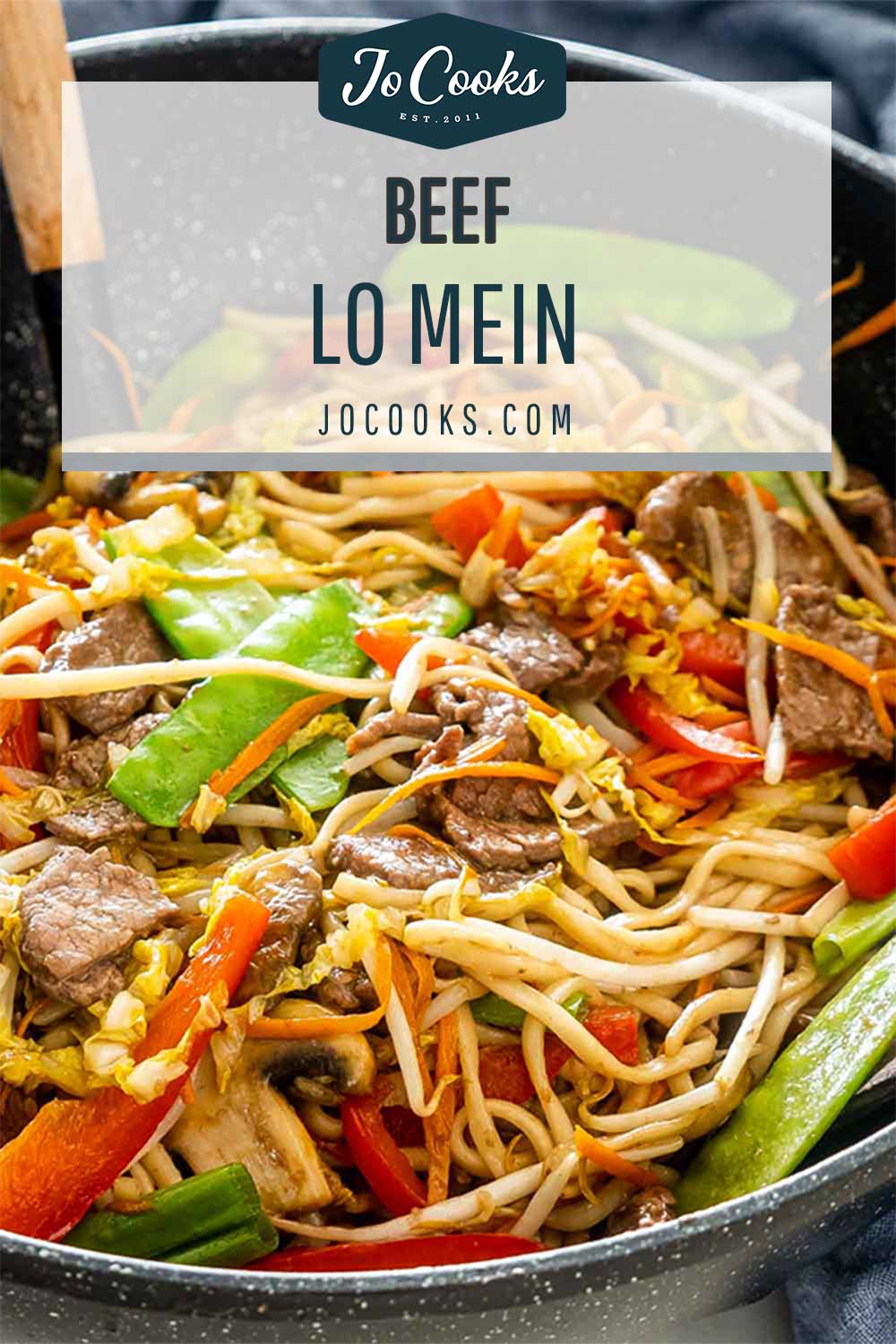

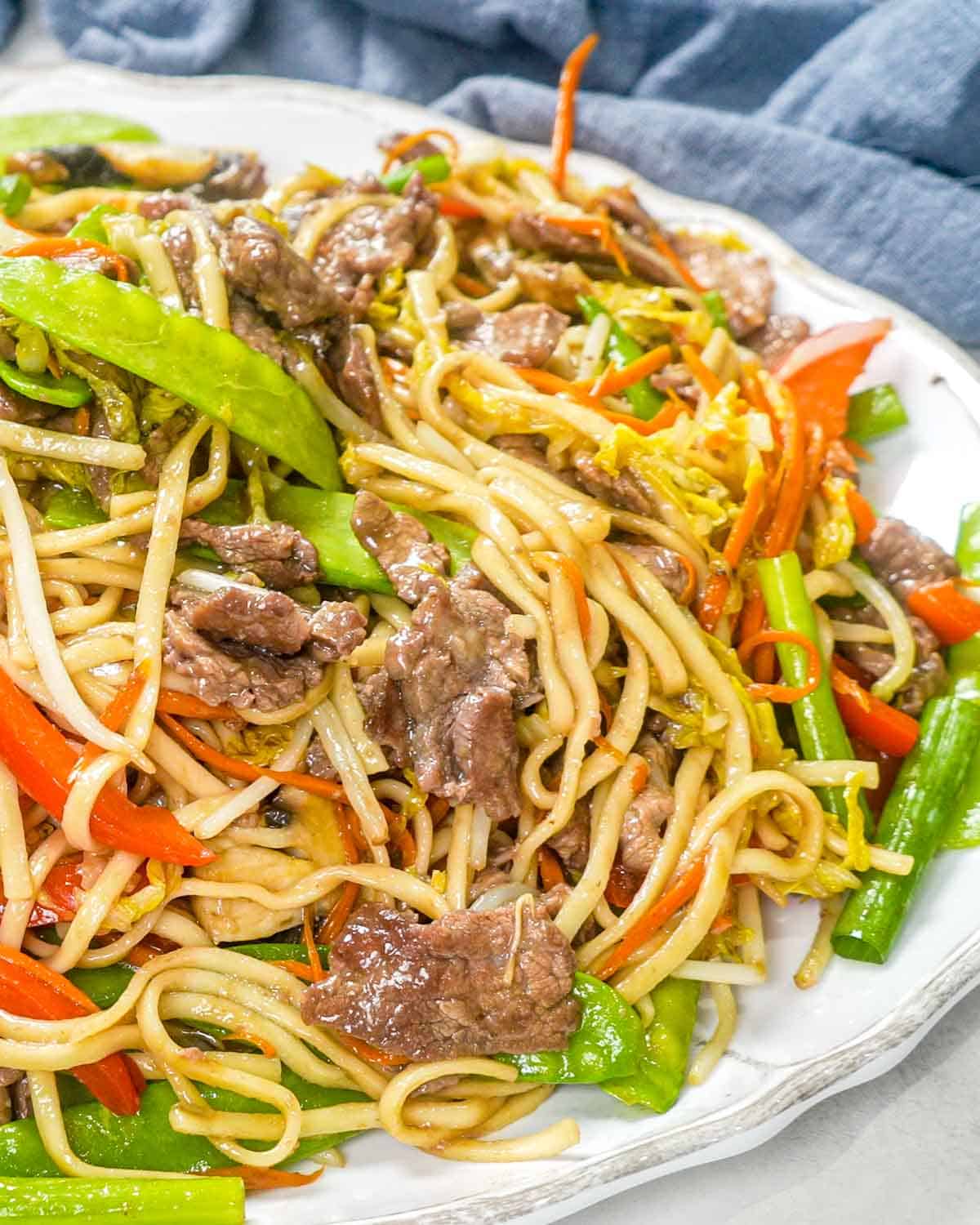
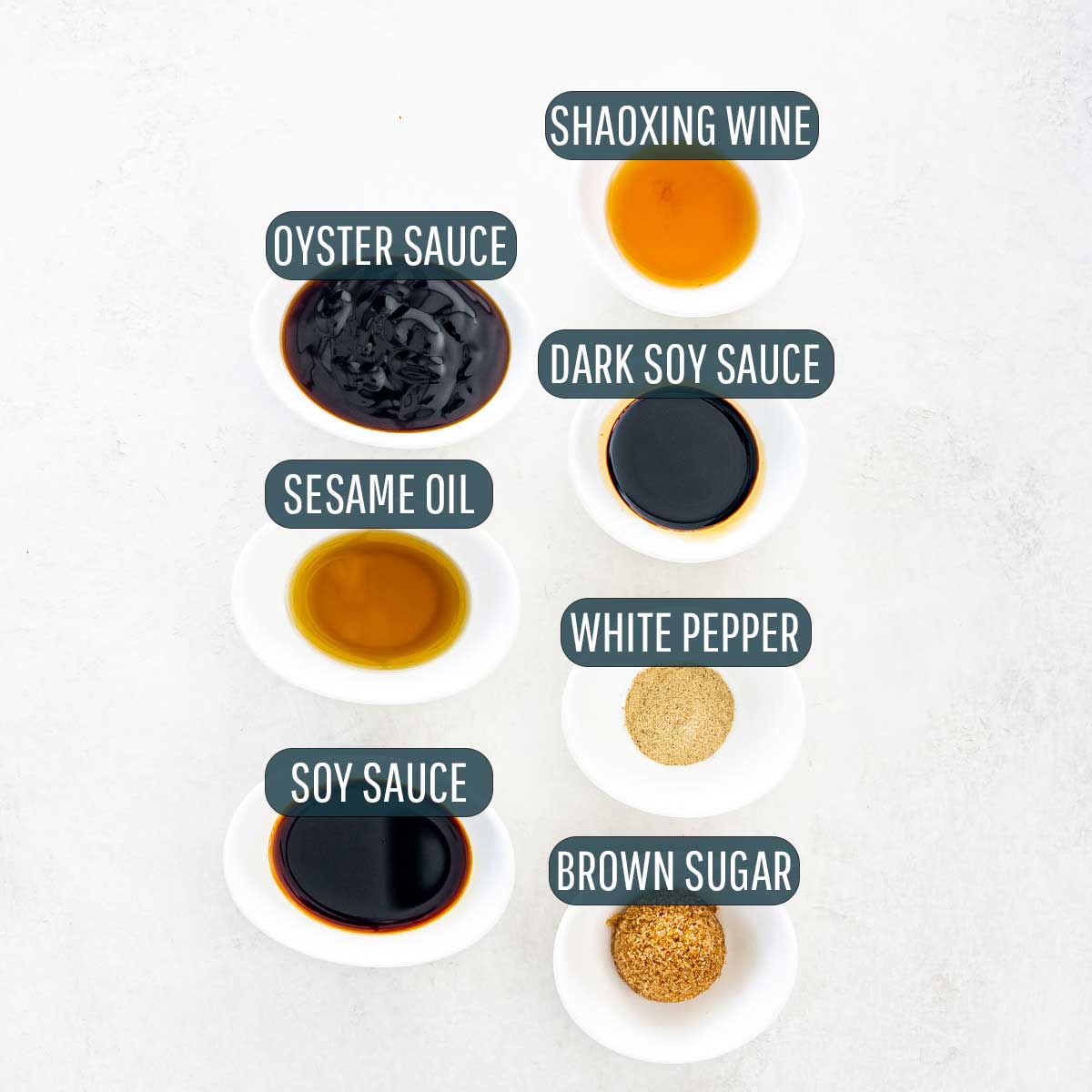
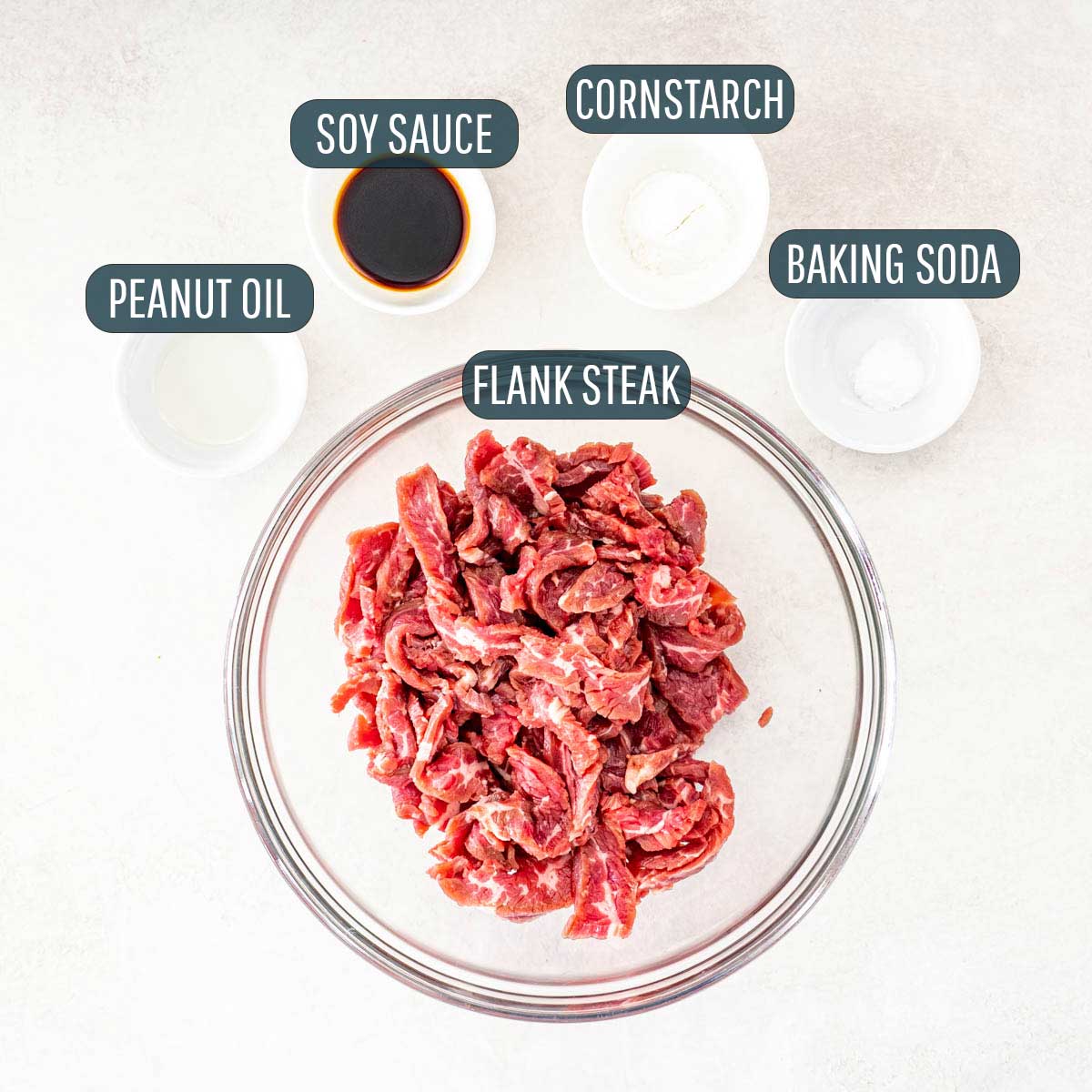
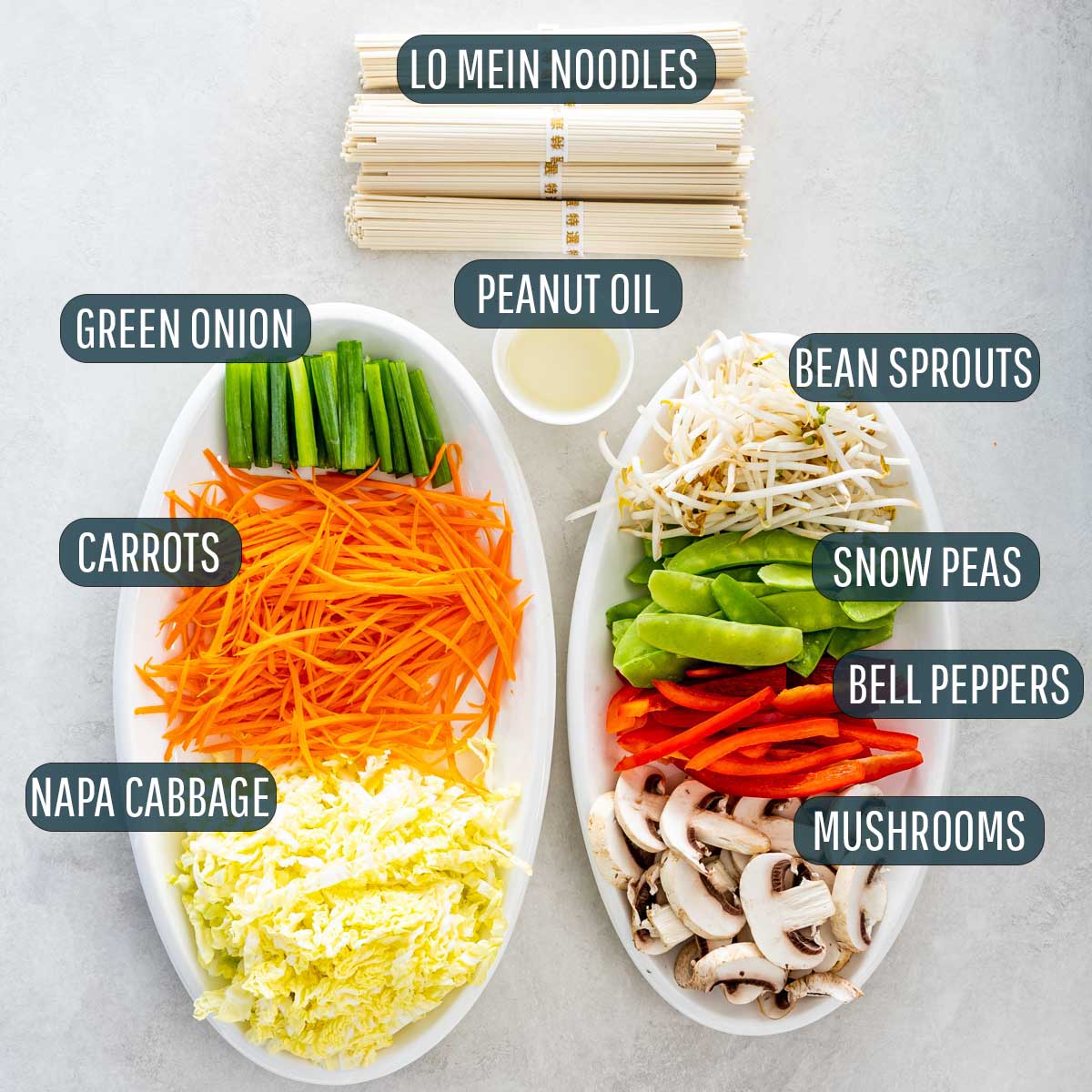
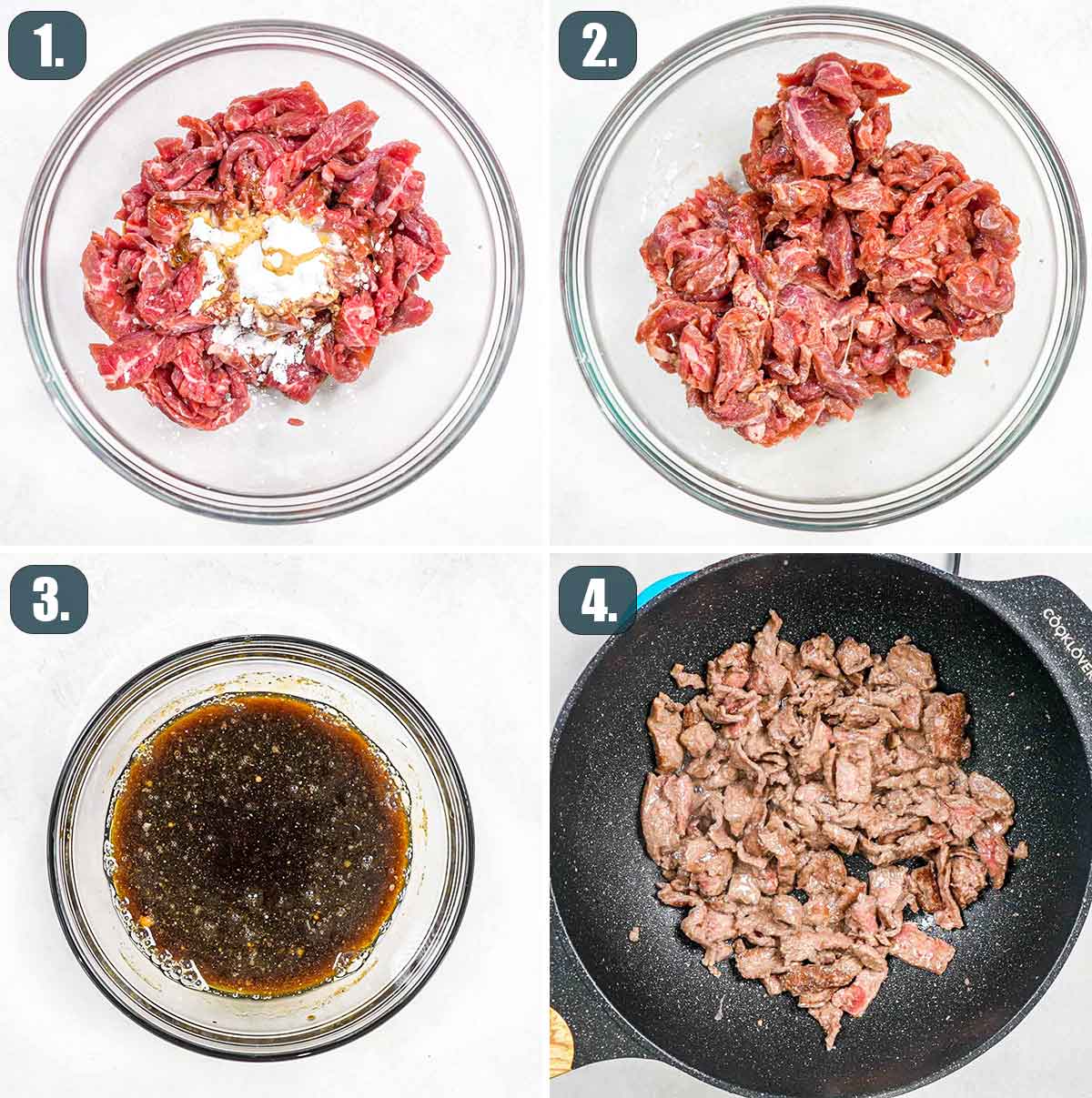
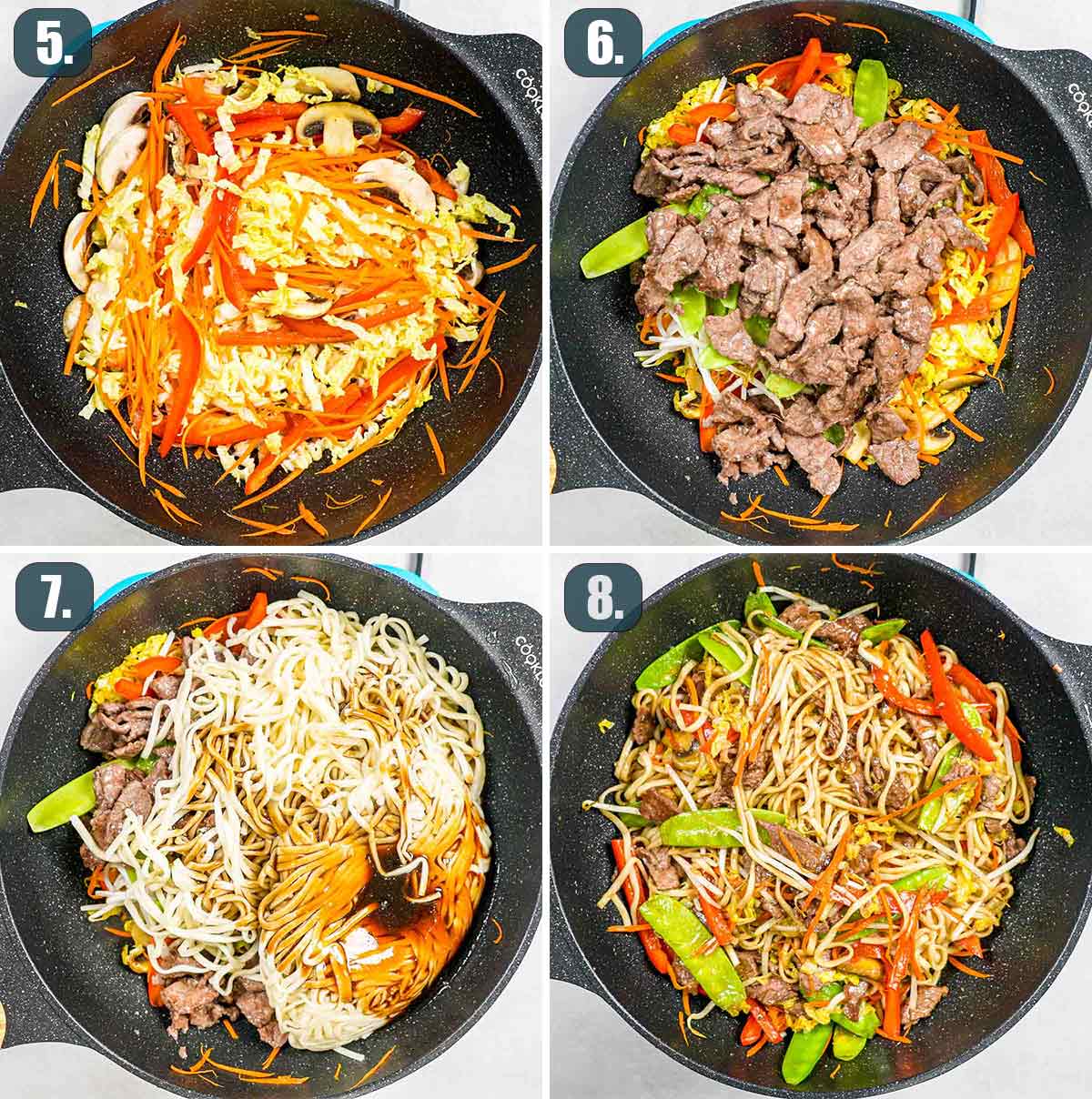
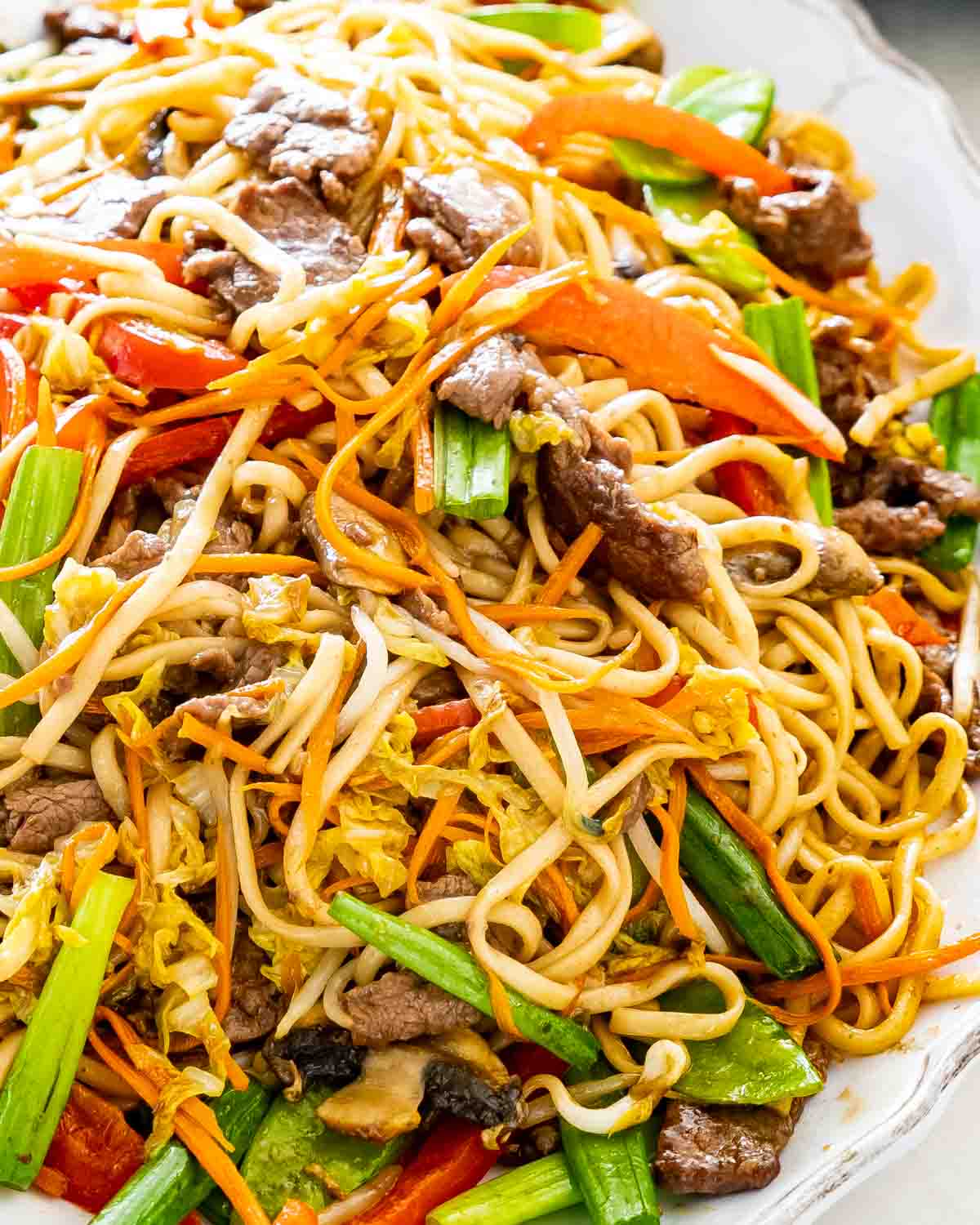
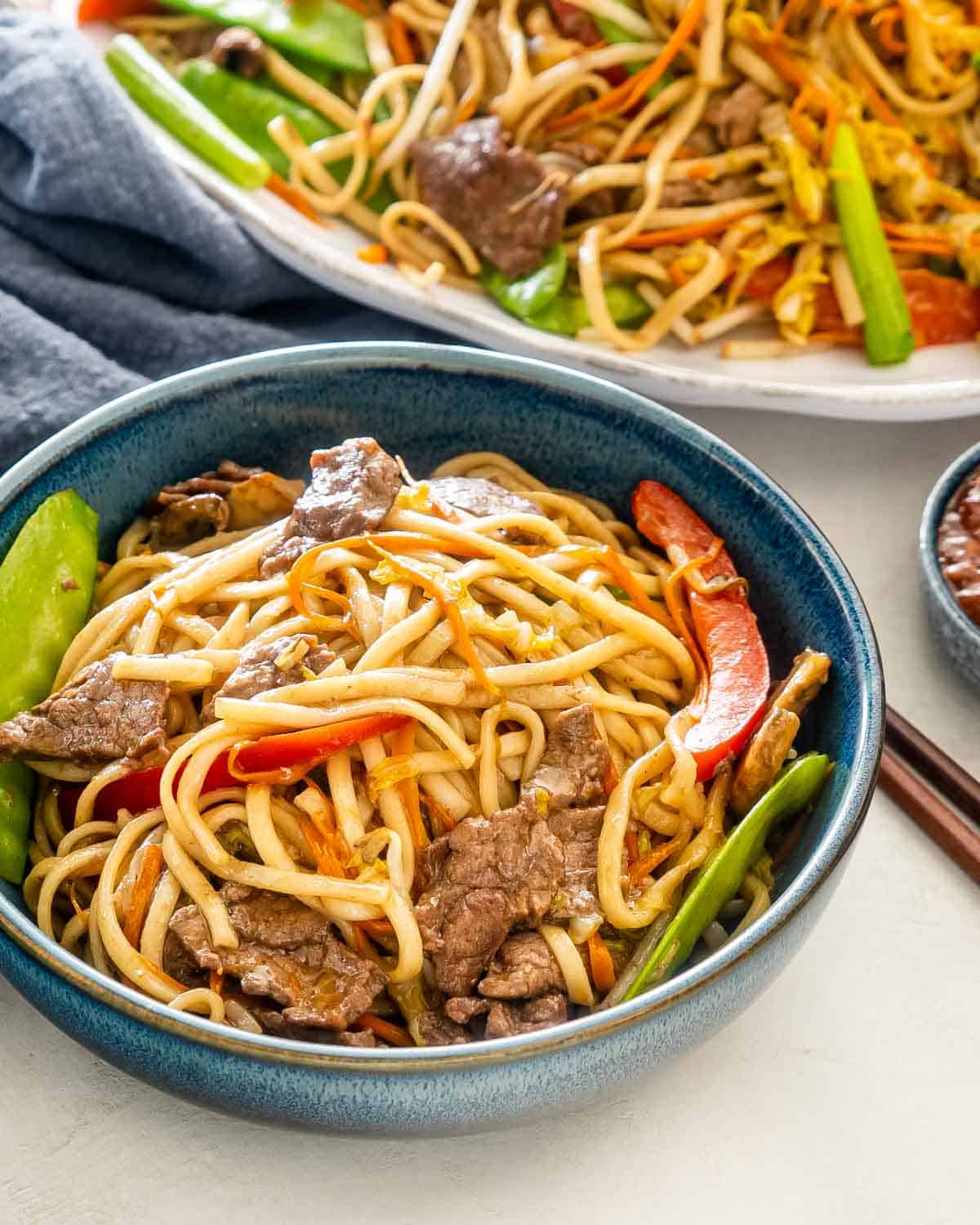


title: “Beef Lo Mein” ShowToc: true date: “2024-10-30” author: “June Chase”
Be sure to try my Egg Roll in a Bowl and Beef Fried Rice recipes next!
Beef Lo Mein
It is seriously hard not to eat this Beef Lo Mein right out of the skillet! When I say this is better than takeout, I 100% mean it. It’s the real deal, and really easy to make! The beef is seasoned and juicy, the vegetables are vibrant and perfectly softened with the right amount of crunch, and savory Lo Mein noodles are tossed in the best sauce; it’s perfectly balanced with every element of flavor represented. I can’t wait for you to try this! Don’t miss my Pro Tips below!
How to Make It
See recipe card below this post for ingredient quantities and full instructions. Tenderize, slice, and season the beef. Toss with 1/4 cup of the sauce mixture and set aside while you measure out the remaining ingredients. Sear the beef in peanut oil and set aside. Deglaze the skillet with white wine and reduce by half.
Sauté broccoli, onions, peppers, and carrots in the same skillet. Add the remaining sauce mixture. Bring to a boil and allow it to thicken. Reduce to a simmer.
Add cooked Lo Mein noodles and stir to combine. Add the beef back and toss to heat through. Garnish with green onions and serve!
Storage
Store in an airtight container and refrigerate for up to 3 days or freeze for up to 3 months.
Leftovers do freeze well. Be sure to use a timer when you cook the noodles to ensure they aren’t mushy/overcooked when reheated.
Try These Next
Tried This Recipe?
Leave a review, I love hearing your feedback! ⭐⭐⭐⭐⭐
3-Quart Stainless Steel Sauté Pan– The same size as pictured in this recipe. 1 quart measuring cup with a spout– This is what I use to combine my sauce ingredients ahead of time. Kitchen Tongs– For handling the chicken during searing and tossing the lo mein in the sauce at the end. 8-inch Chef’s Knife– This is the one I have, I love it. Cutting Boards- I love having assorted sizes. (One for the meat, one for the veggies, etc.) Better Than Bouillon– This is what I always use for broth in my recipes. It takes very little space and makes it easy to measure out customized amounts of broth.
